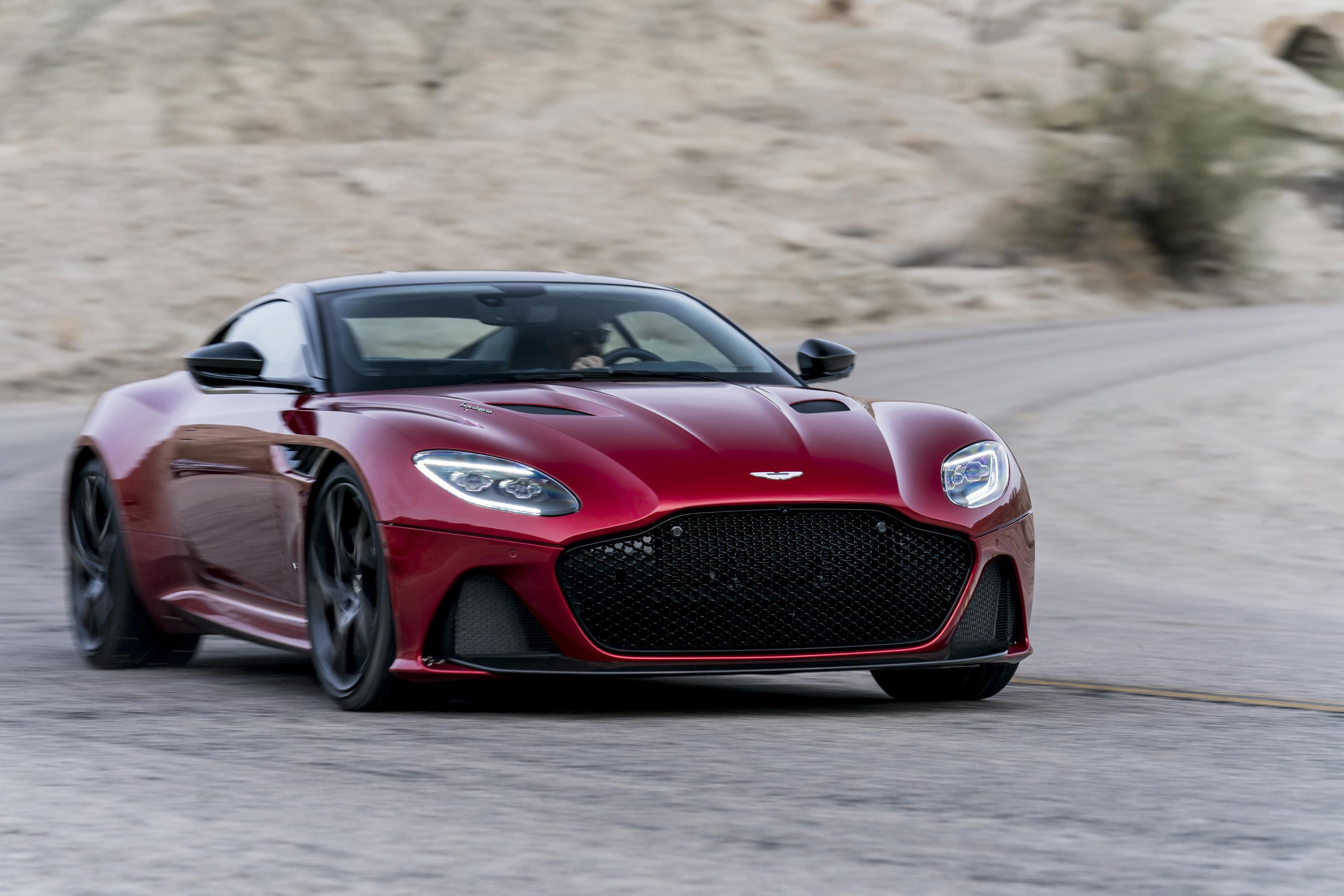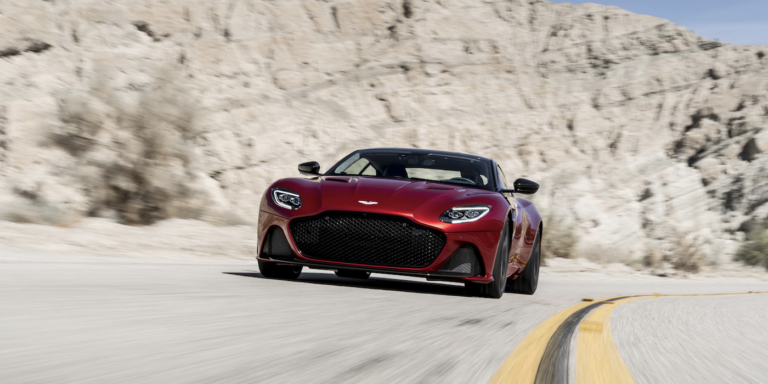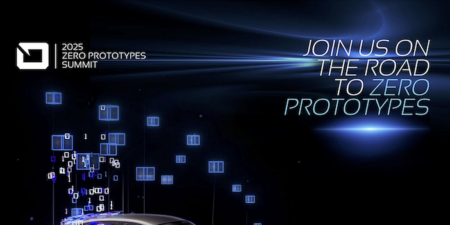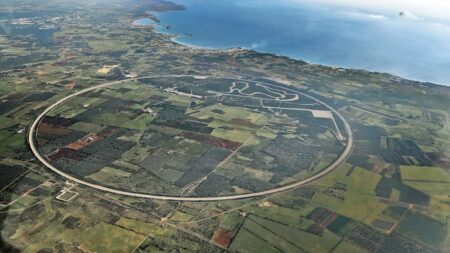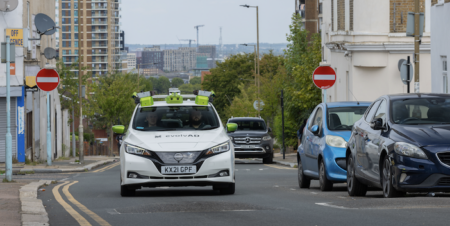Aston Martin has been working hard to replace its ageing model range that still traced back its roots to the 2004 DB9. 2016 saw the launch of the DB11, the first Aston to be signed off by ex-Lotus guru Matt Becker, while the first Aston developed completely under his auspices – the smaller V8 Vantage – was unveiled this year.
Still hiding quietly in a corner of the Aston Martin range, waiting to be axed, however, was the more powerful, harder-edged Vanquish. Now it, too, can retire, as it is succeeded by the DBS Superleggera, which promises to finally have the firepower – and dynamic polish – to take the fight to rivals like the Ferrari 812 Superfast.
As Ferrari has elected to give its front-engined supercar a somewhat nonsensical English name with Superfast, so Aston Martin has responded by giving its front-engined supercar a somewhat nonsensical Italian name. But while the Ferrari is undoubtedly super fast, the Aston’s 1,693kg dry weight doesn’t exactly make it superleggera, despite featuring a bonded aluminum chassis and carbon fiber body panels that save 72kg over the DB11. For comparison, the Ferrari weighs in at 1,525kg dry. Instead, the name is a reference to Italian coachbuilder Touring Superleggera, which made special versions of several Astons in the 1960s.
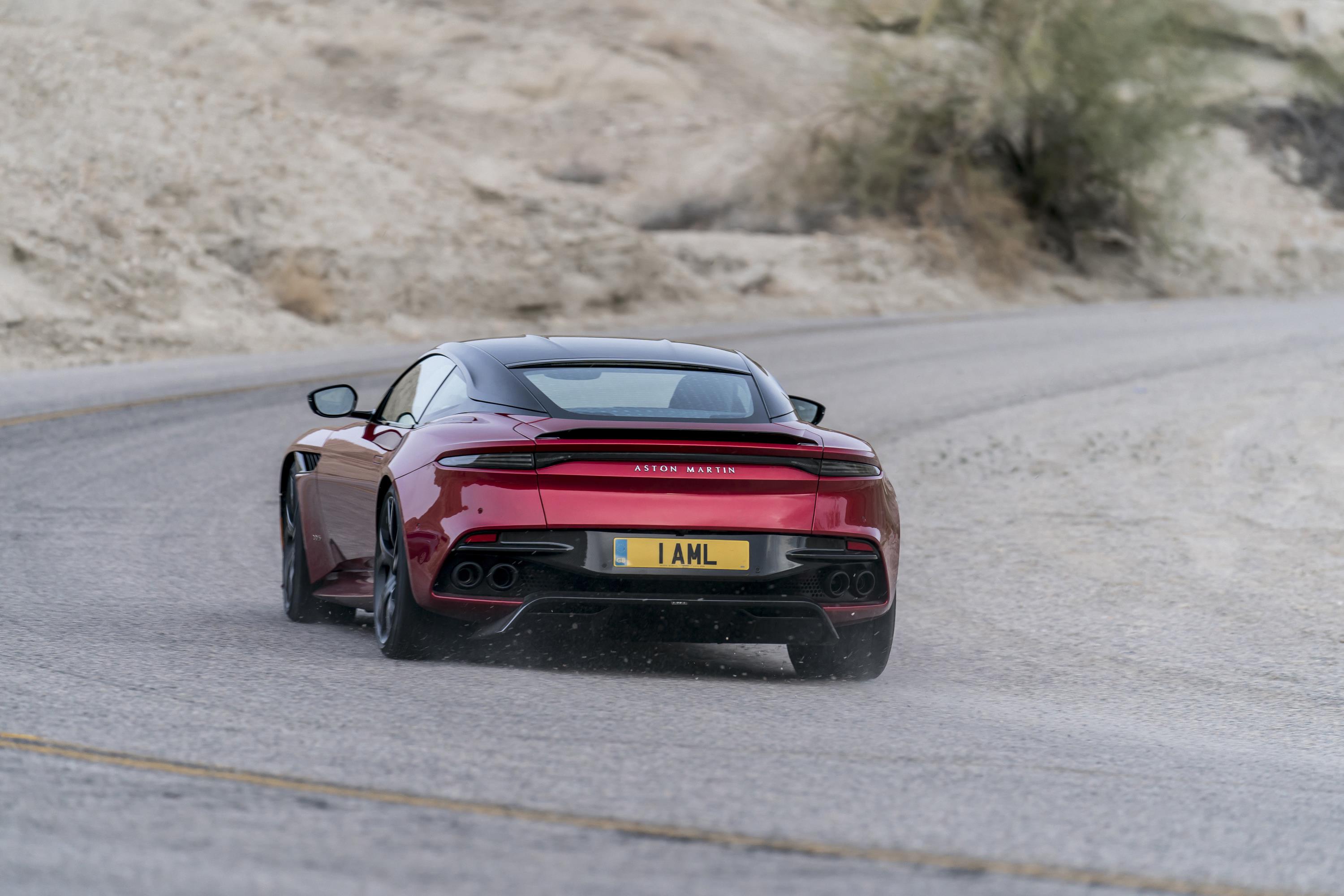
To make sure that the weight doesn’t impact the handling too negatively, the DBS sticks with the familiar transaxle layout that big Astons have had since the DB9. Balancing the mass of the 725bhp, 5.2-liter V12 up front, and helping to achieve a 51/49 weight distribution, is a strengthened ZF eight-speed automatic transmission with a mechanical LSD. It receives the power through an alloy torque tube with a carbon fiber propshaft and puts it to the ground via a pair of bespoke 305/30/21 Pirelli P Zeros. Front wheels are also 21in, but with 265-section tires.
Keeping those tires in contact with the road are an array of new aerodynamic measures, chief among which are the double diffuser and the second generation of Aston Martin’s Aeroblade, a system that ducts air from an inlet in the C-pillar to a slot the width of the trunk lid, achieving the same effect as a rear wing without spoiling the car’s clean lines.
In addition, the front splitter and airdam work together to accelerate airflow underneath the front of the car to deliver true downforce and cool the front brakes. The deeper side strake draws more air from the front wheel arch to reduce lift and aid high-speed stability. Together, all these measures produce 180kg (399 lb) of downforce at 211mph (340km/h).
The suspension follows the architecture of the DB11, with forged double wishbones at the front and a multi-link setup at the rear. Adaptive damping with three different settings is fitted as standard. The DBS Superleggera rides 5mm lower than the DB11 and features bespoke geometry settings, with increased front and rear camber and new bush geometry to improve traction and lateral load performance. An electrically assisted, speed-dependent steering rack with a 13.09:1 is tasked with informing the driver of the available grip over 2.4 turns lock-to-lock.
The DBS Superleggera’s power is reined in by a carbon ceramic braking system, with 410mm discs and six-piston calipers at the front and 360mm discs and four-piston calipers at the rear. The additional capacity and heat resistance of the standard carbon brakes allows more and stronger interventions by the torque vectoring by braking system than in the DB11.
As Aston Martin’s chief of vehicle attribute engineering Matt Becker said, “The new DBS Superleggera is a hugely potent car. Every time I drive it I’m blown away by its raw performance. While we wanted to create a very, very fast car, it was crucial that it didn’t terrify less experienced drivers. To this end we’ve honed the dynamics so that it’s agile and connected, but also linear and progressive as you work towards its limits. Much like we’ve tuned the engine to deliver the meat of its performance at real world revs, we’ve tuned the handling to engage and reward drivers of all ability levels.”
